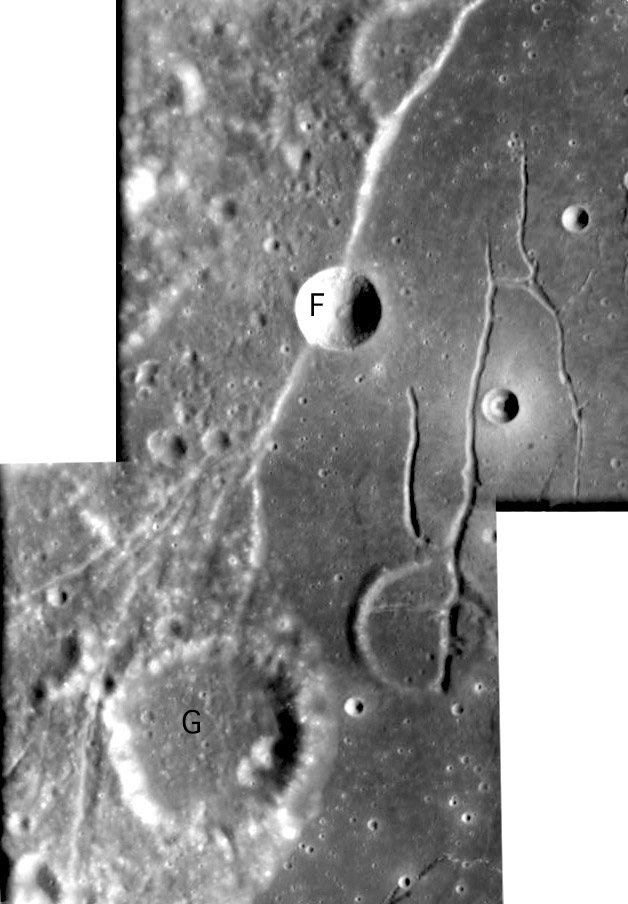
Image by ESA SMART-1
The western shore of Mare Humorum is one of the few places on the Moon where the motion of a fault is easily seen. The Liebig Fault is the sharp boundary between the mare lavas of Humorum and higher and more cratered (thus older) surrounding material. At the top of this newly released SMART-1 image the fault is seen to cut through an older eroded crater. The right half of the crater is missing, apparently it was carried downward at least a few hundred meters and was subsequently covered by mare lavas. Further south is a sharp-rimmed, newer crater (Liebig F - 8.9 km wide and 1.6 km deep) that formed on the fault. But look closely at the southern end of F and notice that the rim is slightly disrupted by faulting, and the fault is also faintly visible inside the northern half of F. These observations imply that the fault continued with slight activity after F was formed - in other words, the fault did not form instantaneously. To the east of the fault are three or more rilles that are neither linear nor sinuous. The south end of the middle rille has some perpendicular segments where it penetrates a ruined crater just east of Liebig G. On low Sun images the floor of this rille-cut ruin appears slightly domed, as does the left rille. This family of rilles connects to a long rille further south (Doppelmayer Rille) which has an associated pyroclastic deposit. Also, look very closely at the northern end of the rilles - two of them continue as very fine cracks, with a few pit craters. All of these rilles are volcanic - either fissures or collapsed lava tubes.
Technical Details:
13 January 2006. Advanced Moon Micro-Imager Experiment (AMIE) camera on SMART-1 spacecraft.
Related Links:
Rükl plate 51
Yesterday's LPOD: Dead Romans
Tomorrow's LPOD: Polar Volcanism?
COMMENTS?
Register, Log in, and join in the comments.



